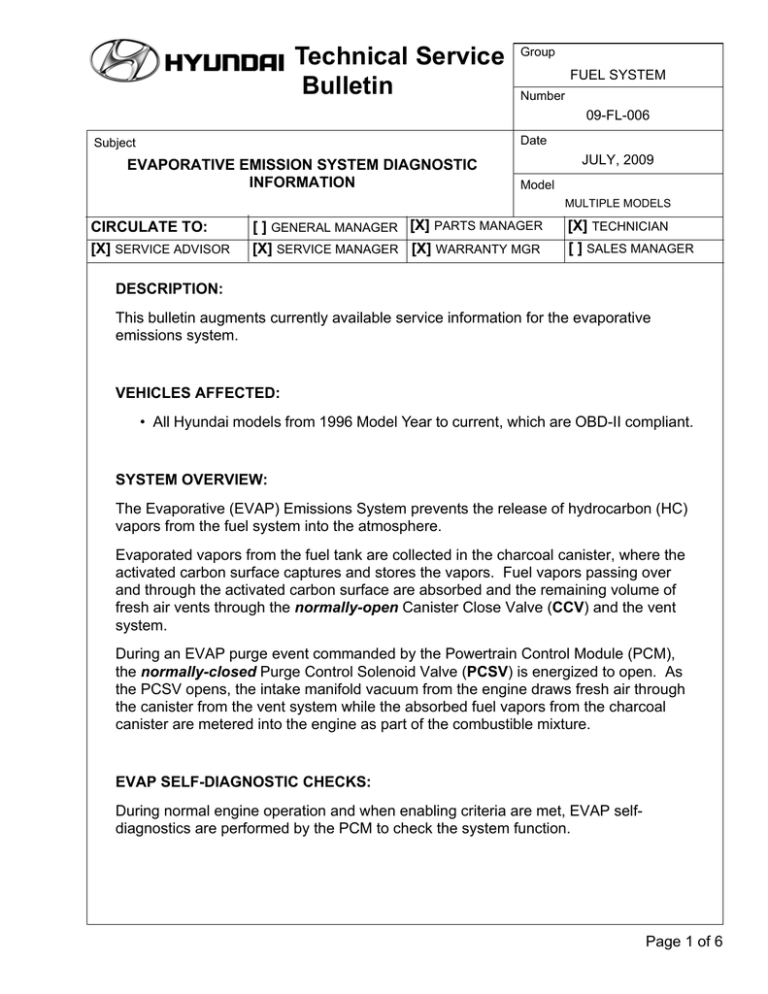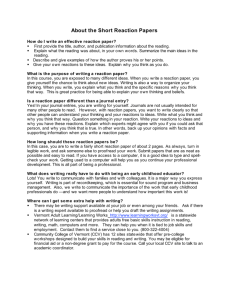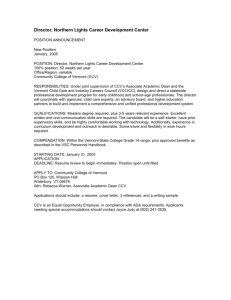Technical Service Bulletin
advertisement

Technical Service Bulletin Group FUEL SYSTEM Number 09-FL-006 Date Subject EVAPORATIVE EMISSION SYSTEM DIAGNOSTIC INFORMATION JULY, 2009 Model MULTIPLE MODELS CIRCULATE TO: [X] SERVICE ADVISOR [ ] GENERAL MANAGER [X] PARTS MANAGER [X] SERVICE MANAGER [X] WARRANTY MGR [X] TECHNICIAN [ ] SALES MANAGER DESCRIPTION: This bulletin augments currently available service information for the evaporative emissions system. VEHICLES AFFECTED: • All Hyundai models from 1996 Model Year to current, which are OBD-II compliant. SYSTEM OVERVIEW: The Evaporative (EVAP) Emissions System prevents the release of hydrocarbon (HC) vapors from the fuel system into the atmosphere. Evaporated vapors from the fuel tank are collected in the charcoal canister, where the activated carbon surface captures and stores the vapors. Fuel vapors passing over and through the activated carbon surface are absorbed and the remaining volume of fresh air vents through the normally-open Canister Close Valve (CCV) and the vent system. During an EVAP purge event commanded by the Powertrain Control Module (PCM), the normally-closed Purge Control Solenoid Valve (PCSV) is energized to open. As the PCSV opens, the intake manifold vacuum from the engine draws fresh air through the canister from the vent system while the absorbed fuel vapors from the charcoal canister are metered into the engine as part of the combustible mixture. EVAP SELF-DIAGNOSTIC CHECKS: During normal engine operation and when enabling criteria are met, EVAP selfdiagnostics are performed by the PCM to check the system function. Page 1 of 6 NOTE: If any portion of the self-diagnostic test is executed and fails, then all further EVAP system checks are suspended. Each diagnostic test must run and pass without failure before proceeding to the next series of tests. • The first check performed is to confirm if the PCSV is closing completely or is leaking vacuum. Resulting DTC is P0441 (Purge Flow Incorrect). • If the system failed the above PCSV DTC P0441 test, then a supplemental diagnostic check will be performed which checks for P2422 (Vent Path Restricted). This diagnostic is accomplished by opening the normallyclosed purge valve and monitoring the fuel tank pressure sensor for an increase in vacuum. If the measured vacuum exceeds the threshold, then DTC P2422 is set to indicate a vent system restriction. (In some systems, P0446 may set instead.) Page 2 of 6 Technical Service Bulletin Group FUEL SYSTEM Number 09-FL-006 • The second check performed is the P0455 (Large Leak Detect). This diagnostic is accomplished by closing the normally-open canister close valve (CCV) and opening the normally-closed purge valve while monitoring the fuel tank pressure sensor signal until -10 in H2O (vacuum) is achieved. Once the FTPS achieves target vacuum, the PCSV is commanded “closed” and the vacuum decay is measured. If a leak in excess of a 0.100" hole is detected, then DTC P0455 is set. • The third check performed is the P0442 (Small Leak Detect). This diagnostic follows the same process as the Large Leak Detect described above, however, the threshold values are reduced. If a leak in excess of a 0.040" hole is detected, then DTC P0442 is set. Page 3 of 6 • The fourth check performed is the P0456 (Very Small Leak Detect). This diagnostic follows the same process as the two Leak Detect checks described above, however, the threshold values are the lowest. If a leak in excess of a 0.020" hole is detected, then DTC P0456 is set. EVAP SYSTEM RELATED DTC - POSSIBLE CAUSES: P0441 (Incorrect Flow Detected) This code may set if the system detects vacuum leaking through the purge valve at idle. • Purge Control Solenoid Valve may be stuck open or leaking internally. Å Fuel Å ©¾ Ð Ê ·  ¼ ¾ ¼ ­ Tank PCSV PCSV ¿ ·¬Cap áÄ ¸ Fuel ¿Vapor ·¬ áÅ Ê Å© Ä ³́ ½ Ï º Å Í Canister ¿ £ Á ø Exhaust Liquid ¿ Vent ¡ î ¾ Ç Ê Å Í CCV CCV CCV Page 4 of 6 Technical Service Bulletin Group FUEL SYSTEM Number 09-FL-006 P0455 (Large Leak), P0442 (Small Leak), P0456 (Very Small Leak) There are multiple potential causes and a manual leak check may be required to determine the exact location of the detected physical leak (Refer to TSB 02-30-001). • Check the fuel cap gasket and the fuel filler neck sealing interface. Check tightening click and removal effort of the fuel cap (there may be a partial seal if removal effort is too light). • Check for loose connections at the interface of hoses, clamps, quick connectors, and O-rings. In addition, check for leaks at hoses, fuel pump top plate, or canister. • PCSV (low flow/leaking/reverse connected) or CCV (leak when energized) issues. Connection of vapor lines Å Fuel Ê ©¾ Ð Å ·  ¼ ¾ ¼ ­ Tank 3 PCSV PCS V ¿ ·¬Cap áÄ ¸ Fuel ¿Vapor ·¬ áÅ Ê Å© Ä ³́ Ï ½ º Å Í Canister ¿ £ Á ø Exhaust 4 CCV CCV 1 Liquid ¿ Vent ¾ î ¡ Ç Å Ê Í Fuel cap or filler neck interface 2 Hose connection to filler neck or tank NOTE: PCSV will normally set DTC P0441 if leaking, and not cause leak DTC’S Page 5 of 6 Technical Service Bulletin Group FUEL SYSTEM Number 09-FL-006 P2422 (Vent Valve Stuck Closed), P0446 (Vent Control Circuit Malfunction) • Foreign material in vent path (dirt, spider webs, kinked line). It may be required to remove both ends and use shop air or other methods to clear the obstruction. • CCV (stuck closed) mechanically or CCV filter assembly is plugged with dirt, preventing airflow from atmosphere into and through the canister. NOTE: Under extreme conditions, such as driving on dusty roads, or unpaved roads for prolonged periods, the CCV filter will require more frequent replacement during routine maintenance. Å Fuel Ê ©¾ Ð Å ·Â ¼¾ ¼ ­ Tank PCSV PCSV ¿ ·¬Cap áÄ ¸ Fuel ¿Vapor ·¬ Å á Ê Å© Ä ³́ Ï ½º Å Í Canister ¿ £ Á ø Exhaust Liquid ¿ Vent ¡ ¾ î ÇÊ Å Í 2 CCV CCV 1 Restriction thevent vent Restriction ininthe path from the CCV path form the CCV WARRANTY INFORMATION: Normal warranty applies. Page 6 of 6




